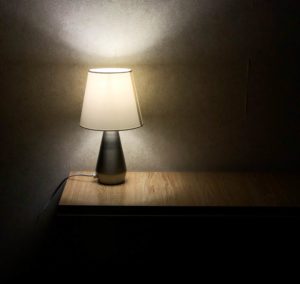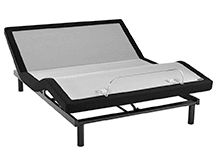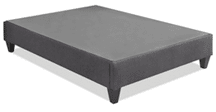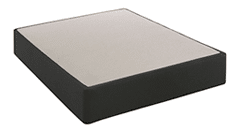
Light exposure is the primary thing that influences your brain and body in the ways necessary to rest and rise.
The amount and type of light exposure you have directly affects your brain and how it directs the body’s functions. Understanding how light impacts sleep will help you learn to utilize light to improve your sleeping habits.
Exposure to light in the morning increases the chemicals in your brain that allow you to become alert during the daytime. Lack of light exposure at night will trigger your brain to send sleep-inducing hormones through the body. Sunlight is the most powerful type of light and a natural clock for your body to follow.
Your circadian rhythm is your body’s internal clock and signals your body when to fall asleep or become alert. Your Suprachiasmatic Nucleus controls the circadian rhythm in your hypothalamus and is essential for maintaining your body’s internal rhythm. It manages your body’s melatonin production, enabling you to fall asleep during the dark hours of the day. The circadian rhythm develops in infancy, and disturbances to this natural hormone cycle can wreak havoc on your needed rest periods. Artificial light, jet lag, daylight savings time, and other sleep influencers can disrupt your circadian rhythm and prevent you from achieving the sleep your body naturally needs.
Darkness triggers the production of melatonin, a hormone that cues our body into sinking into a restful state. It is a delayed sleep disorder when the body’s melatonin production is low or released at the wrong time. When your eyes perceive darkness, the pineal gland in your brain begins the production of melatonin. Light exposure, such as that from screens, artificial light, or even light-emitting small electronics, can disrupt that production and make it more difficult for you to achieve a restful state.
There are many different types of light that can disrupt melatonin production but in different ways. The most powerful of these is sunlight, followed by white and yellow light, artificial light, and finally, blue light.
Sunlight has the most substantial effect on your circadian rhythm. It tells your body when to wake up and when to sleep. When your body perceives light in the morning, it signals your brain and other organs that it is time to rise. Following sunlight timing for your active and rest cycles is the healthiest way to ensure you get a good night’s rest and feel energized during the day. Following sunlight patterns is only possible for some, though. For example, workers who work graveyard shifts must train their bodies to the opposite sleep cycle. If you need to sleep during the day and work through the night, use tools like blackout curtains during the day and bright lights overnight.

Different types of artificial light, from white or amber to blue or red, affect the brain differently. A soft, warm light is best if you need to see at night without feeling alert, and it isn’t as jarring as a bright white light. Evidence suggests that red light can be the best for nighttime use, but all artificial light can trick your body into thinking it’s daylight and keep you alert for extended periods of time. If you are having trouble getting to sleep, reducing your exposure to artificial light during and shortly before bedtime can help your body produce the melatonin it needs.
Blue light, or high-energy visible or HEV light, comes from screens like your TV, computer, or phone. While you may have heard about the cons of exposure to blue light, there are some benefits to it as well. In moderate amounts, blue light promotes alertness, boosts memory and cognitive function, elevates your mood, and helps regulate your circadian rhythm. These effects can hinder your mission of falling asleep, though.
Loss of sleep due to light exposure can result in several health issues. Recent studies show that even a moderate amount of light can negatively impact your sleep cycle and cause adverse health effects. There are links between Artificial light at night (ALAN) and the risk of developing breast cancer, melatonin suppression, and circadian phase disruption.
Nighttime light exposure has numerous physical effects, including cancer, metabolic disorders, eye problems, hypertension, and vision problems. Poor sleep can cause type 2 diabetes, increasing insulin resistance and eventually disrupting metabolism. Poor sleep is also associated with increased heart rate, as your body cannot enter the sleep phase necessary for tissue regrowth. One study done with a group of over 40,000 women found that sleeping with a light or TV on was associated with a 17% higher risk of weight gain of 11 pounds or more in five years.
Light exposure during sleep increases anxiety and depression and can aggravate other mood issues like bipolar disorder. Fatigue and trouble concentrating are reported in those who cannot get the rest they need. Poor sleep quality can also worsen the symptoms of ADHD, put you in an irritable mood, and impair your decision-making abilities.
Avoiding ALAN is a great way to improve your health and help maintain your circadian rhythm. You can reduce your nighttime light exposure to help your body produce maximum melatonin and enter a restful state sooner.
If you need entertainment to settle your mind, try reading a book before bed instead of watching a movie. If you want to experiment with total darkness but have light-emitting electronics, try putting them on a timer to power completely off at night or unplugging them altogether. If you live in an urban area with significant light pollution, install blackout curtains to prevent it from entering your sleep sanctuary.
If you think light isn’t the problem, but you still aren’t getting the rest you need, call us! The sleep experts at Mattress World Northwest can help you finally get the rest you deserve!
While you can't go wrong with any of our mattresses, here are a few factors you'll want to consider before making a purchase: your sleep position (and if you have a partner, theirs as well), the size of the space, and a price point. If you have any questions, rest easy knowing that our team is happy to help you find that perfect fit.
| Size | Dimensions |
|---|---|
| Twin | 38″ wide x 75″ long x 9.25″ tall |
| Twin XL | 38″ wide x 80″ long x 9.25″ tall |
| Full | 54″ wide x 75″ long x 9.25″ tall |
| Queen | 60″ wide x 80″ long x 9.25″ tall |
| King | 76″ wide x 80″ long x 9.25″ tall |
| Cal King | 72″ wide x 84″ long x 9.25″ tall |
| Split King (2pk) | 38″ wide x 80″ long x 9.25″ tall |
Mattress World Northwest makes it easy to choose the right foundation for your space and lifestyle.



Reliable support for your boxspring and mattress.
